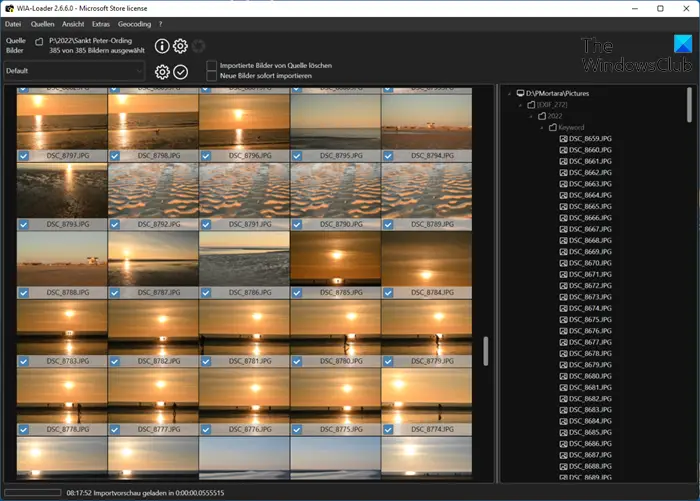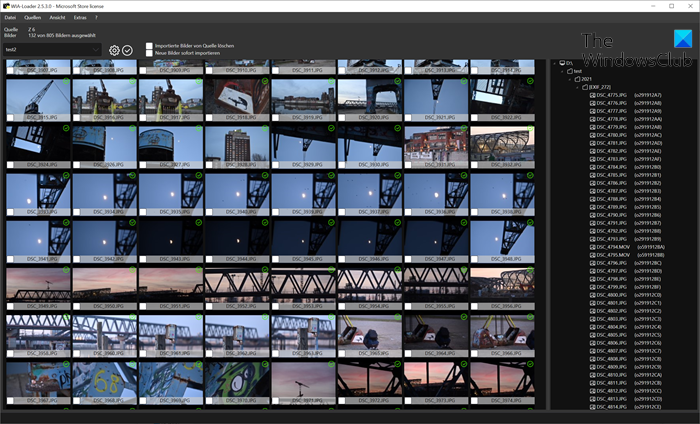Most of us tend to enjoy taking photos with a standalone camera or a smartphone. Every smartphone comes with a camera these days; therefore, we can claim to be impressive photographers. Now, after taking many photos with your favorite device, you’re likely wondering what is the best way to get the images onto your Windows computer. If you’re using a modern smartphone, that task should be as easy as they come.
Automatically transfer Photos from Camera to Computer

If you’re using a standalone camera, the easy aspect might not be the case at all. What you’ll need, then, is a tool that was designed from the ground up to have photos transferred from a camera to a computer. The tool in question is WIA-Loader, and it offers a Portable version too!
Some of its main features are:
- Quickly transfer images and videos to your computer
- Different profiles can be defined for different areas of application
- Connects GPS position data from GPS loggers with images
- Automatically rotates images to the correct position or enlarges or reduces them during import if desired
- Creates order in the image collection. Images are stored in clearly definable places with clearly definable names.
WIA-Loader for Windows PC
Freeware WIA-Loader will automatically transfer images from a digital camera, Flash card or smartphone to your Windows computer. It also lets you Import and Manage photos. Once you’ve launched the application for the first time, you’ll be asked whether or not you want to create an import profile. It offers the following tabs:
- Import/Export
- Settings
- View
- Tools.

1] Import/Export
OK, so you might be ready now to import or export image files, among other things. To do that, click on File, then select Import/Export, and from there, you should see a new window. Now, this window will give the option to either import or export Profiles, Settings, Tags, Window settings, Image database, Filetypes, Device database, and Keyword history.
Users can select the ones they want or everything under the sun. After that, click the Import or Export button to get the job done.
2] Settings
If you’re interested in customizing WIA-Loader, then the Settings area is the best place to look. Here, you’ll have the ability to look at image metadata, tags, file types, and much more. To get there, simply click on File, then Settings, and from there, choose the option you need.
Should you click on the General section, you’ll see the ability to connect to the last device you’ve used after starting the program each time, show hints, and whether to use the background process for long-running tasks. Do you want to load previews and retrieve EXIF data on demand automatically? No problem, this is very much possible.
There’s a lot the user can do here, which also includes automatic image selection, and that’s great.
3] View
Well, this section is pretty straight to the point and shouldn’t require a description. Since WIA-Loader is a photo transfer app, then it means the View tab is all about how images are shown. Folks can select to show thumbnails for each photo and the underlying details.
If that’s not enough, then how about grouping thumbnails by date? Yes, that’s cool too. Now, we also like the ability to sort images in a particular way, and we’re certain many will want to use this.
4] Tools
Looking at the Tools tab we can see several things to choose from, but they won’t do much outside of saving logs, sending log files, looking at the device information, camera control, and more. This section is primarily used for when things have failed to go as planned.
Most users may never have to use the Tools tab if they’re not doing anything overly drastic.
Download WIA-Loader right now from the official website.